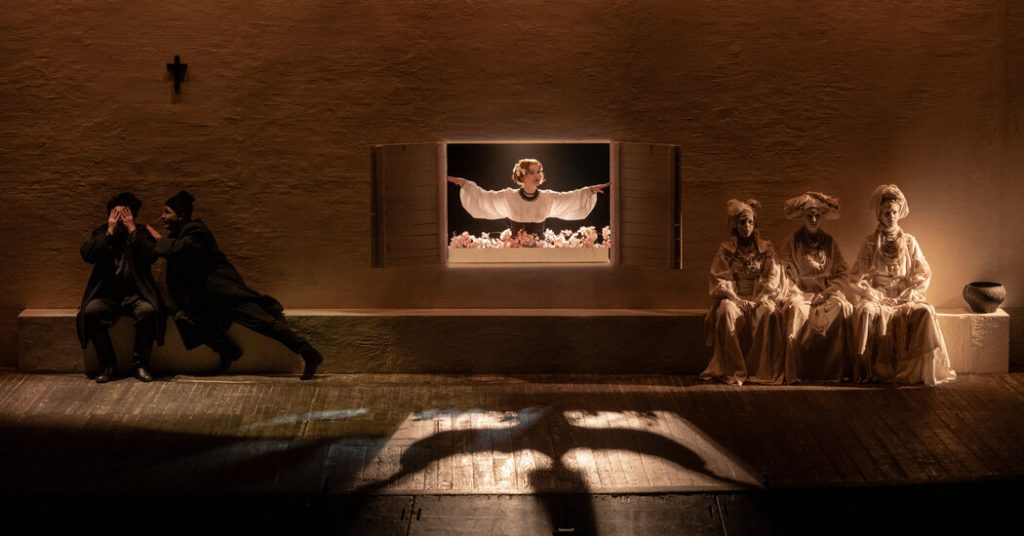The play based on the classic 19th-century Ukrainian novel, “The Witch of Konotop,” has become a smash hit in Kyiv, drawing long lines of people willing to wait up to seven hours for tickets. The play, which is anything but upbeat, resonates with Ukrainians because it reflects the current tragic reality they are living through. Through the story of a Cossack leader trying to root out witches amid a drought and military threat from czarist Russia, the play captures the sense of impending tragedy and offers a way for audiences to make sense of their lives. Despite the harsh reality Ukrainians are facing, the play manages to touch people’s hearts by reflecting the mood of the time and the people.
The success of the play also signifies a renewed interest in Ukraine’s cultural heritage following Russia’s invasion in 2022. The culture of the Cossacks, a seminomadic people who populated Ukraine and southern Russia, has become a focal point for many Ukrainians seeking to embrace and understand their own history and identity. The play, composed by Susanna Karpenko with influences of Ukrainian folk music, has found an eager audience looking to reconnect with their cultural roots amidst the ongoing conflict. The resurgence of interest in Ukrainian culture mirrors a broader pushback against Russian influence in the country, which has intensified since the two invasions of Crimea and Eastern Ukraine in 2014 and the full-scale attack in 2022.
Despite the disruption caused by the war, Ukrainian theater has rebounded, with a significant increase in the number of plays staged across the country. The production of “The Witch of Konotop” has been particularly successful, with the play evolving into a mainstay of the Ivan Franko theater’s repertoire. The story, based on the novel by Hryhorii Kvitka-Osnovianenko, follows the tragic tale of Mykyta Zaboha as he grapples with unrequited love, a devastating drought, and the belief in witches threatening his community. As the play unfolds against the backdrop of czarist Russia’s advances, the themes resonate strongly with contemporary Ukrainian audiences grappling with the realities of war and uncertainty.
Young Ukrainians, in particular, have been drawn to the theater, seeking both entertainment and a deeper connection to their cultural heritage. The popularity of the play among young audiences is evident in the high demand for tickets and social media buzz, with posts related to “The Witch of Konotop” garnering millions of views on platforms like TikTok. The play offers a window into Ukraine’s history and folklore, captivating audiences with its portrayal of witches and the complexities of societal beliefs and superstitions. Through engaging with the play, young people like Anastasia Shpytalenko and her friends are discovering and appreciating the richness of Ukrainian culture, finding that the old can be just as compelling as the new.
The imagery of witches, which holds significant cultural resonance in Ukraine, has further fueled the play’s popularity. The enduring presence of witches in Ukrainian folk traditions and recent viral videos invoking witches in defiance of Russian forces have captured the public’s imagination. A Ukrainian pop song about a witch cursing the enemy and the proliferation of witch-themed souvenirs reflect the widespread fascination with this motif. Witches represent a potent symbol of resistance and power, echoing the spirit of defiance and resilience in the face of adversity that has characterized Ukraine’s response to the war. Ultimately, the play’s success can be attributed to its ability to tap into this collective consciousness and offer audiences a means of grappling with the complexities of war, history, and identity in contemporary Ukraine.


